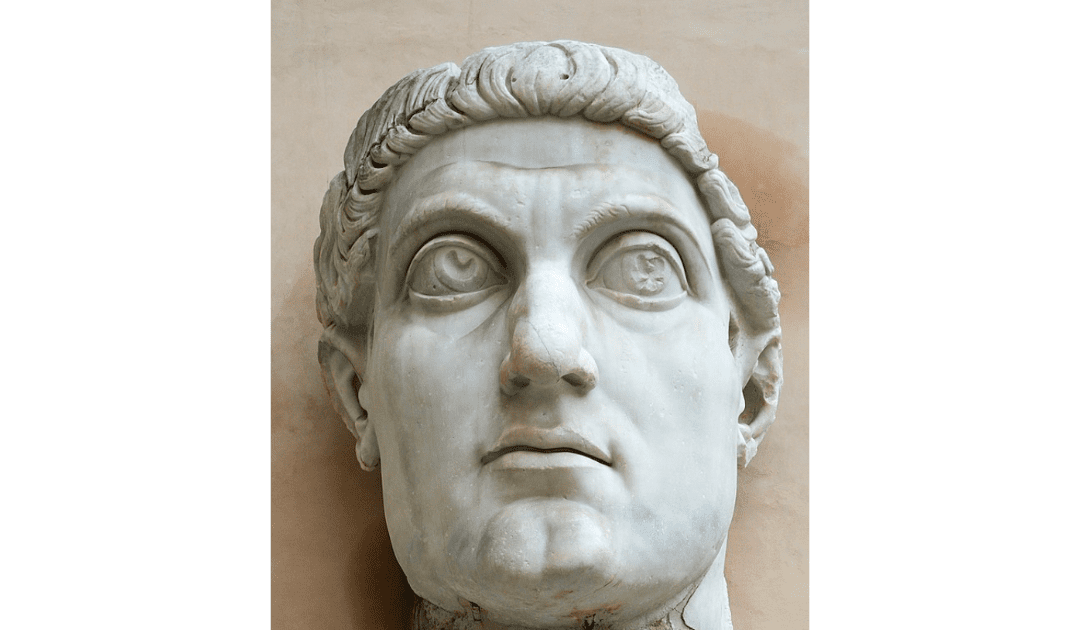The On This Day website tells me that on 21st October 335 Constantine the Great ruled that Jews were no longer allowed to purchase and circumcise Christian slaves. Constantine was born on 27th February 272 AD, in modern-day Serbia. He hailed from a noble family, and his father, Constantius Chlorus, was a Roman general. His mother, Helena, was a Greek Christian of low birth. Despite his humble beginnings, Constantine’s destiny was set to shape the course of history. Following his father’s rise to the imperial throne, Constantine gained valuable experience in military campaigns, politics, and administration.
In 305 AD, Constantine was campaigning with his father in Britainnia. His father died in 306 and the army declared Constantine emperor in Eboracum (York). Constantine embarked on a journey to secure his position as the sole ruler of the Roman Empire. After a series of military victories against emperors Maxentius and Licinius, most notably the Battle of Milvian Bridge in 312 AD, Constantine emerged victorious and began a systematic transformation of the Roman Empire. He united the eastern and western regions, effectively bringing an end to the era of the Tetrarchy. One of Constantine’s defining achievements was his issuance of the Edict of Milan in 313 AD. This groundbreaking decree granted religious tolerance to Christians, paving the way for the eventual establishment of Christianity as the state religion. Constantine’s tolerance extended beyond Christianity, as he encouraged the coexistence of different religious beliefs within his empire. This act of religious reconciliation was instrumental in shaping the religious landscape of Europe for centuries to come.
Perhaps Constantine’s most enduring legacy lies in the founding of a new capital city, which he named Constantinople (modern-day Istanbul). This relocation of the imperial seat from Rome to Constantinople in 330 AD was a strategic move that not only centralised power but also facilitated trade, cultural exchange, and the spread of Roman influence throughout the Eastern Mediterranean. Constantinople’s strategic location ensured its prominence as a vibrant and thriving centre of civilisation for over a millennium.
Constantine’s reign was marked by a series of administrative and legal reforms aimed at improving the governance of the empire. He enacted legislation that protected the rights of farmers, expanded the civil service, and standardised laws across the empire. To combat inflation he introduced a new gold coin, the Solidus. This was the standard European and Byzantine currency for more than a thousand years. Additionally, Constantine undertook ambitious building projects, such as the construction of grand basilicas and palaces. He ordered that the Church of the Holy Sepulchre be built on the purported site of Christ’s tomb. He convoked the first council of Nicaea in 325 which produced the statement of Christian belief known as the Nicene Creed.
What would our world be like today without Constantine? Perhaps Christianity would not have flourished, there would not have been the wars between Catholics and Protestants, and there would have been no Sir Anthony Standen Adventures. Actually, knowing Sir Anthony as I do now, he would certainly have had an interesting life.

